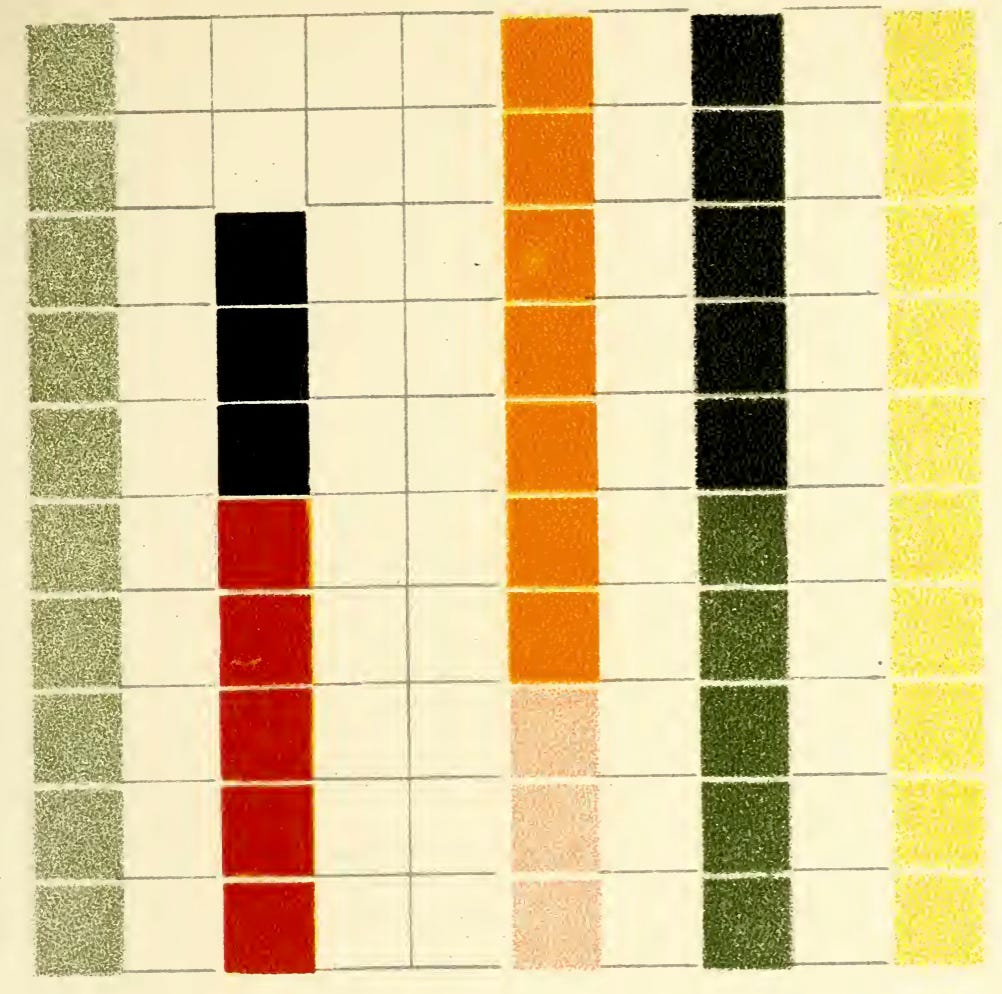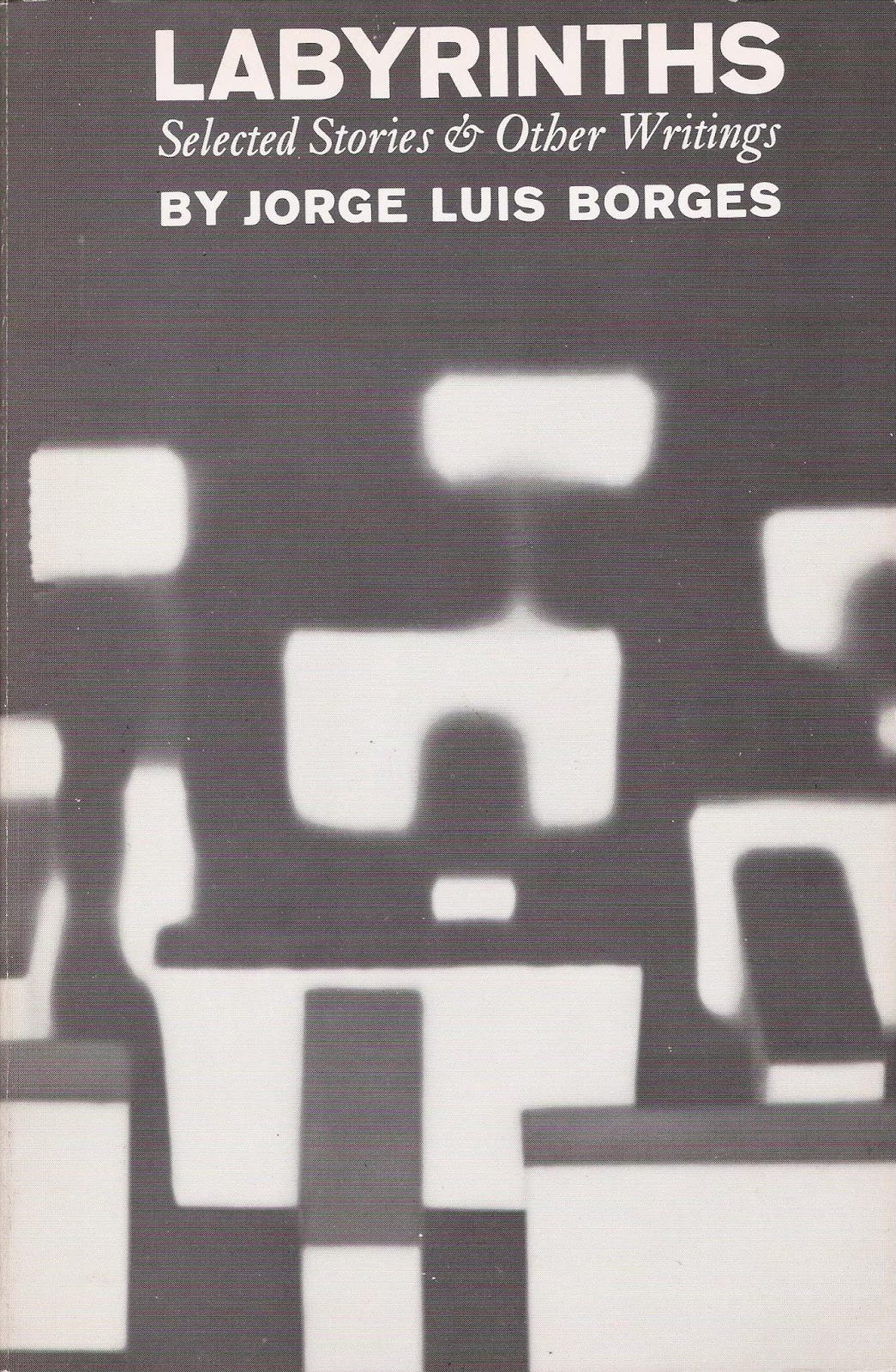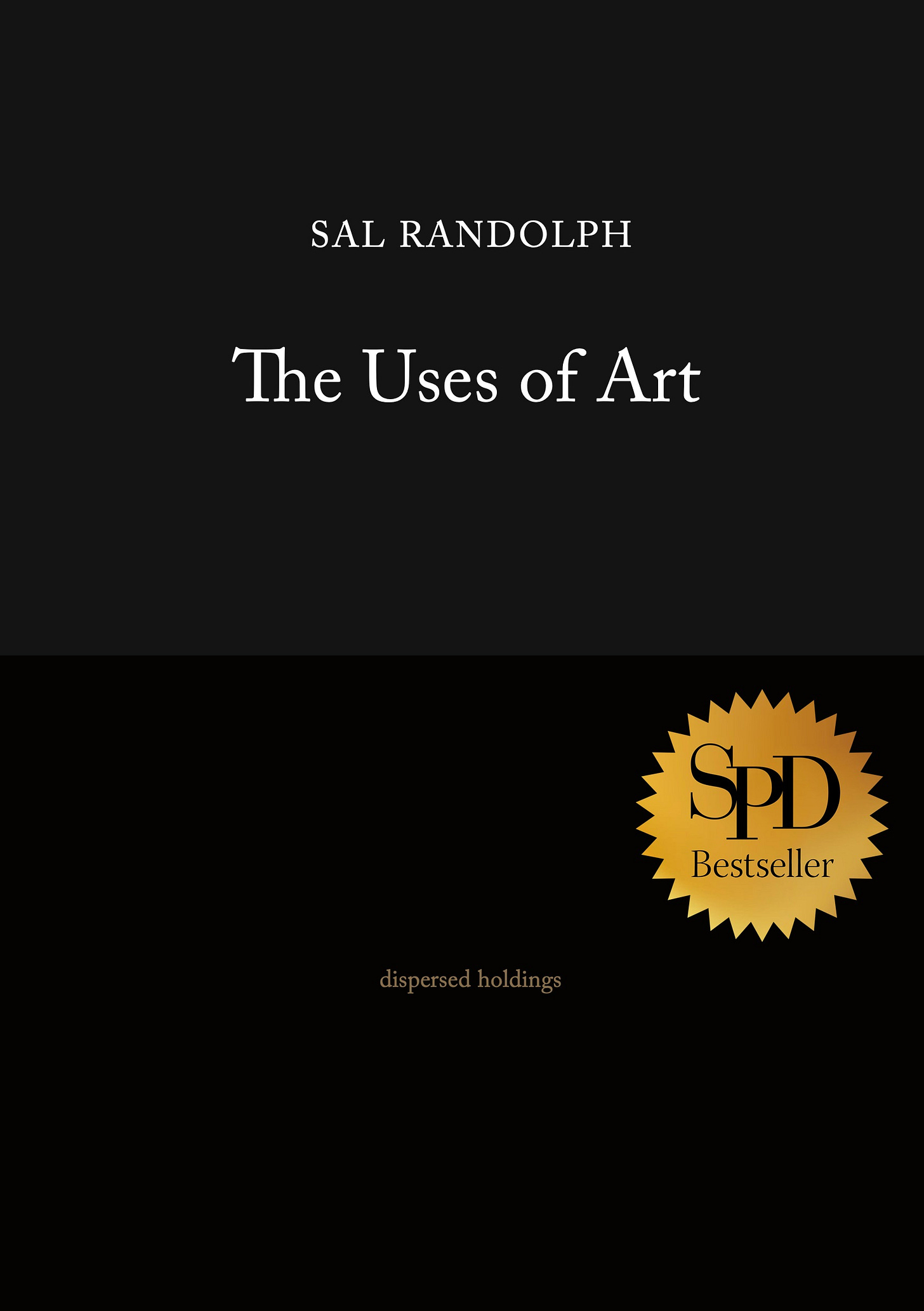
Dear Friends,
Have you ever given such intense and continuous attention to a work of art or writing that you find yourself becoming the object of your attention. Or, have you fallen so far in to something that you feel as if you had made it yourself?
This week’s Ways of Seeing abandons caution and even realism, encouraging us to plunge fully into another’s work and let becoming become.
We follow Jorge Luis Borges as he writes of the enigmatic 20th century author Pierre Menard, a character who found a way to produce (without reproducing) exact passages of Don Quixote. Borges says: “His admirable intention was to produce a few pages which would coincide—word for word and line for line—with those of Miguel de Cervantes.” How did he do it?
We also venture into the opening pages of Lisa Robertson’s novel, The Baudelaire Fractal, where a woman named Hazel Brown wakes up in a Vancouver hotel room and discovers that she has (mysteriously, magically) authored the works of Charles Baudelaire. “Reader,” she says, “I become him.” Then she goes on, “No, I did not become him, I became what he wrote.”
Both Borges and Robertson write of an alchemy of the self, catalyzed by ardent attention. They offer glimpses of how we might do the same.
Let me know what you become.
— Sal
Becoming Author: Lisa Robertson
Lisa Robertson, excerpts from The Baudelaire Fractal.
Now, after a long absence, I had returned to Vancouver as a visitor. I had delivered the lecture on wandering, tailoring, idleness, and doubt. I had conversed, feasted, slept. The following morning, alone in the hotel, I awoke to the bodily recognition that I had become the author of the complete works of Baudelaire. Even the unwritten texts, the notes and sketches contemplated and set aside, and also all of the correspondence, the fizzles and false starts and abandoned verses, the diaristic notes: I wrote them. Perhaps it is more precise to say that all at once, unbidden, I received the Baudelairean authorship, or that I found it within myself. This is obviously very different from being Baudelaire, which was not the case, nor my experience. I had only written his works. It was a very quiet, neutral sensation. I associate it now with the observation of the immaterial precision of light. Such an admission will seem frivolous, overdetermined, baroque. But I will venture this: it is no more singular for me to discover that I have written the complete works of Baudelaire than it was for me to have become a poet, me, a girl, in 1984. I was as if concussed. Believe me if you wish. I understand servitude. My task now is to fully serve this delusion.
…
I’ll explain again. Waking early one morning in a Vancouver hotel room in the spring of 2016, I picked up the copy of Baudelaire that I’d been up late reading the night before. It was a wide bed; I’d simply left the book splayed open on the other pillow and fallen asleep beside it as some might sleep with a cat curled close. I’d slept only lightly. I was preparing to teach a seminar on the prose poem, connecting Baudelaire’s Paris Spleen to Rousseau’s Reveries of a Solitary Walker and the Essays of Montaigne. I felt nervous about these intermittent teaching tasks and so I defensively overprepared; now those hurried studies haunted my sleep. Still in bed, barely awake, I clicked on the lamp, reached for the outdated dark blue Modern Library edition that had replaced the old paperback I’d lost. The translations were mawkish. The worn cloth cover felt comfortable and familiar. I read at random one sentence, a cry posing as a query:
Shall we ever live?
What happened was this: I smashed up against a violent and completely formed recognition that entered through my sleepy hands. The poems were my poems. The words as I read them were words I knew deeply because they were my own, the way my skin was physiologically my own. I’d muttered these words as I walked. I’d crossed them out after several years to replace them with other words and then changed them back. I was completely inside the poem I was reading, and also within its gradual, discontinuous making, which was both skin and breath, and too, sheer wit[.]
…
Any word I could think of was on the cusp of a metamorphosis inaugurated by a single speaker’s mouth. In my unprecedented reception of the Baudelairean authorship, that female mouth was both his and mine.
Becoming Author: Jorge Luis Borges
Excerpts from “Pierre Menard, Author of the Quixote” by Jorge Luis Borges.
He did not want to compose another Quixote—which is easy—but the Quixote itself. Needless to say, he never contemplated a mechanical transcription of the original; he did not propose to copy it. His admirable intention was to produce a few pages which would coincide—word for word and line for line—with those of Miguel de Cervantes.
…
The first method he conceived was relatively simple. Know Spanish well, recover the Catholic faith, fight against the Moors or the Turk, forget the history of Europe between the years 1602 and 1918, be Miguel de Cervantes. Pierre Menard studied this procedure (I know he attained a fairly accurate command of seventeenth-century Spanish) but discarded it as too easy. Rather as impossible! my reader will say. Granted, but the undertaking was impossible from the very beginning and of all the impossible ways of carrying it out, this was the least interesting.
…
To be, in the twentieth century, a popular novelist of the seventeenth seemed to him a diminution. To be, in some way, Cervantes and reach the Quixote seemed less arduous to him—and, consequently, less interesting—than to go on being Pierre Menard and reach the Quixote through the experiences of Pierre Menard.
…
It is a revelation to compare Menard’s Don Quixote with Cervantes’. The latter, for example, wrote (part one, chapter nine):
. . . truth, whose mother is history, rival of time, depository of deeds, witness of the past, exemplar and adviser to the present, and the future’s counselor.
Written in the seventeenth century, written by the “lay genius” Cervantes, this enumeration is a mere rhetorical praise of history. Menard, on the other hand, writes:
. . . truth, whose mother is history, rival of time, depository of deeds, witness of the past, exemplar and adviser to the present, and the future’s counselor.
History, the mother of truth: the idea is astounding. Menard, a contemporary of William James, does not define history as an inquiry into reality but as its origin. Historical truth, for him, is not what has happened; it is what we judge to have happened. The final phrases—exemplar and adviser to the present, and the future’s counselor—are brazenly pragmatic.
…
Menard (perhaps without wanting to) has enriched, by means of a new technique, the halting and rudimentary art of reading: this new technique is that of the deliberate anachrönism and the erroneous attribution. This technique, whose applications are infinite, prompts us to go through the Odyssey as if it were posterior to the Aeneid and the book Le jardin du Centaure of Madame Henri Bachelier as if it were by Madame Henri Bachelier. This technique fills the most placid works with adventure.
Exercise: Becoming Author
Choose an object of attention, or let it choose you. Perhaps it is a work of art or of literature. Perhaps it is something you encounter in the world.
Begin by simply observing. Nothing can happen without the connection you make by offering attention. Keep looking, keep returning. This is not an action of minutes, but one of hours and days, even months or years. Even when you are away from the object of your attention it is still alive inside you.
Let go of caution. Ignore the ordinary boundaries between yourself and what you are perceiving. Keep it close, do not fear obsession. Sleep often: dreams are the crucible of transformation.
Allow yourself to become the object of your attention. Allow yourself to have created it.
As with all of these “Ways of Seeing,” the initiating impulse is to expand our possibilities for engaging with works of art and deepening attention to everything around us. These exercises are perfect for time spent in museums, galleries, and studios. You can also bring them into the rest of your life and experiment with streets, libraries, parties, landscapes. Try them as writing or art-making prompts.
These practices work best if you give them some time.
As ever, interpret these instructions freely and intuitively.
Share your results and reflections in the comments. I’d love to hear from you.
Lisa Robertson
Lisa Robertson’s The Baudelaire Fractal is available from Coach House Books.
Lisa Robertson’s Instagram.
Jorge Luis Borges
“Pierre Menard, Author of the Quixote” can be found in many Borges collections including Labyrinths which is available from New Directions.
Further adventures and new ways of seeing can be found in my book, The Uses of Art.
Artist Sal Randolph’s THE USES OF ART is a memoir of transformative encounters with works of art, inviting readers into new methods of looking that are both liberating and emboldening.
Dazzlingly original, ferociously intelligent.
— Michael Cunningham
A joyful, dazzling treasure-box of a book.
— Bonnie Friedman
Here’s a guide, to waking up, over and over again.
— Roshi Pat Enkyo O’Hara








hey sal, thrilled to read this. lisa robertson is amazing! the thing that occurs to me immediately in the category of "feeling like you did it yourself" is the way sports fans identify so closely with their team that they say things like "we did it!" or "we won!" on sunday berlin will be hosting the final of the european soccer championships, and there will be huge numbers of people engaging in acts of rapt attention, experiencing every kick, every tackle, every foul, and every goal as if they were executing it themselves! (some would object that a soccer match isn't art, but others would disagree ...)
I love your piece and yes, I have fallen into these universes often. Way back I stopped reading Italo Calvino because I did not want my writing to be meshed with his... it was and still is!